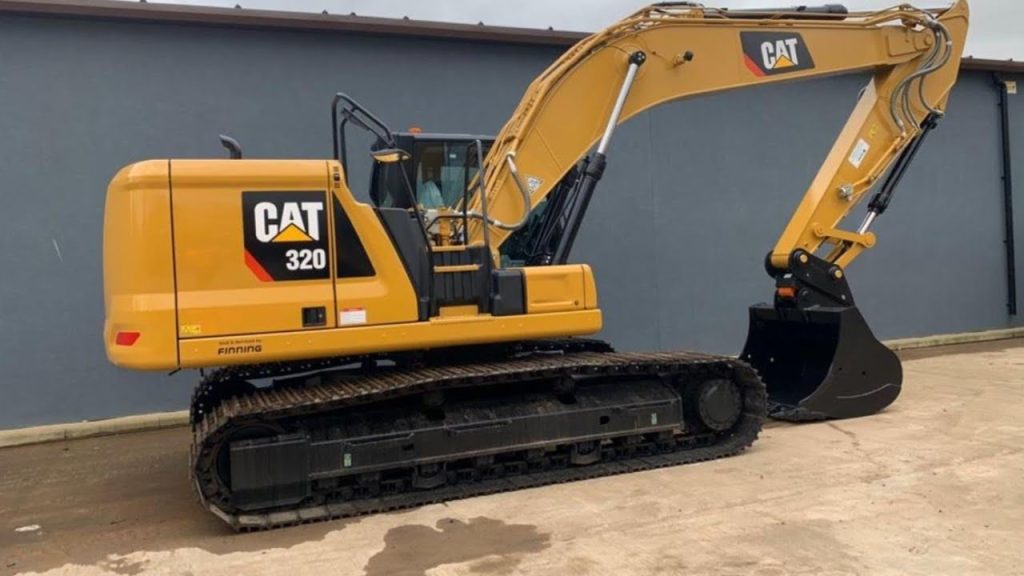Typical maintenance should be carried out on your Caterpillar 320 CLN Excavator regularly by a professional at an authorized service center. This will provide you with the protection that you need and prevent you from incurring unexpected repair costs in the future. Below, we’re going to provide you with some of the common maintenance tasks that are required for this machine.
Check the caterpillar 320 cln Excavator hydraulic oil and filter
1. Open the cab door, open the engine hood and remove the oil drain plug from the engine oil pan;
2. Remove the oil filler cap from the engine;
3. Start the engine and run it for 3 minutes, then turn off the engine;
4. Remove the hydraulic oil tank drain plug, drain pipe, and hydraulic oil filter;
5. Install a new hydraulic oil filter and tighten it by hand to ensure that it is sealed in place;
6. Install a new drain plug, drain pipe, and tighten them by hand to ensure that they are sealed in place;
7. Add new hydraulic oil until it is full, then check whether there is any leakage at all joints;
8. Turn on the engine and run it for 3 minutes to check whether there is any leakage at all joints, if not turn off the engine and install the oil filler cap;
9. Install a new engine oil drain plug and tighten it by hand to ensure that it is sealed in place;
10. Open the cab door and check whether there is any leakage at all joints, if not close the cab door.

Check the caterpillar 320 cln Excavator fuel filter
The excavator is a multi-functional and large-scale construction machinery that integrates mining, lifting, conveying, loading and unloading. Its working principle is to use the hydraulic system to drive the arm cylinder to rotate through the oil pump, so that the boom, arm, bucket and other parts can be controlled to operate for excavation, loading and unloading operations.
In addition to maintaining daily maintenance of the excavator, it is necessary to do regular maintenance work. The following is a detailed introduction to the maintenance of the excavator’s fuel filter.
First: Check whether there is any dirt in the water separation tank. At this time it will be found that there are foreign objects and impurities in the water separation tank at first, and then clean up in time. If you find that there is too much water inside, you need to replace it as soon as possible.
Second: Check whether there are bubbles appearing in the water separator when it is idling or unloaded. If you find that there is a lot of foam inside or some gas bubbles appear in the sedimentation tank during operation or idling for a long time without load.
Change the caterpillar 320 cln Excavator engine oil and filter
1、Park the machine on a level, firm surface.
2、Place all control levers in NEUTRAL, set the parking brake and chock the wheels to prevent machine from moving.
3、Remove the oil fill cap and dipstick and install an oil suction gun into the oil pan.
4、Depress the handle on the suction gun to drain approximately 60 percent of the engine oil.
5、Remove and empty all debris from the suction gun and reinstall it into the oil pan.
6、Depress the handle on suction gun to drain remaining engine oil.
7、Remove suction gun and dispose of used oil properly.
8、Install a new engine oil filter element onto filter base.
9、Fill engine with 2 U.S. gallons (7.6L) of Cat Oil Filter and Fuel Conditioner (SO-F/C). NOTE: Use only this fluid during priming to ensure proper flow through filtration system. Be careful not to overfill crankcase, or damage may result to turbocharger bearings or crankcase bearings.
Check the caterpillar 320 cln Excavator air cleaner
Air filter is an indispensable part of all kinds of machinery. It’s used to clean the air entering the engine and is the most important protection for engine. If there is any problem with air filter, it will influence the engine operation and even cause engine failure. Therefore, regular inspection and maintenance of air filter is necessary.
In general, we can inspect and maintain it according to the following steps:
1, check whether there are any oil stains on the surface of the filter element or whether there are any oil leaks in the sealing ring between the cover plate and base plate;
2, check whether there are large amount of dust particles on outer surface of filter element;
3, check whether there is damage on surface of filter element or not;
4, check whether there are cracks in sealing ring between cover plate and base plate.
Check the caterpillar 320 cln Excavator hoses, belts, and lines
This will ensure that you are able to identify a potential problem before it causes damage to your equipment. It is also important for you to notice if there are any leaks. This can indicate a leak in one of the hoses or lines. If this is the case, you will want to make sure that there is not a leak at all before continuing with your inspection.
By checking all of these things, you will be able to find out if there are any problems that need to be fixed. If you find that there is a problem with any of the components on your excavator, you will want to fix it as soon as possible. This way, you will be able to get back to work without having to worry about the problems again.
Lubricate all caterpillar 320 cln Excavator grease points
This will ensure that you are able to identify a potential problem before it causes damage to your equipment. It is also important for you to notice if there are any leaks. This can indicate a leak in one of the hoses or lines. If this is the case, you will want to make sure that there is not a leak at all before continuing with your inspection.
By checking all of these things, you will be able to find out if there are any problems that need to be fixed. If you find that there is a problem with any of the components on your excavator, you will want to fix it as soon as possible. This way, you will be able to get back to work without having to worry about the problems again.
Check the caterpillar 320 cln Excavator lights, instruments and gauges
Watch for fire hazards. Do not park on dry grass or near other combustible materials. Never use gasoline or diesel fuel to clean parts of this machine. Do not smoke or allow open flames or sparks in the work area.
Check the fuel supply. Check the engine oil level and add oil as needed. Check transmission fluid levels and add fluid if required. Check hydraulic oil level and add oil as needed. If any leaks are found, tighten all connections, replace faulty hoses, or replace gaskets as necessary. Repair leaks promptly to prevent damage to other components, contamination of lubricants and possible personal injury due to slipping or falling on a slippery surface.
